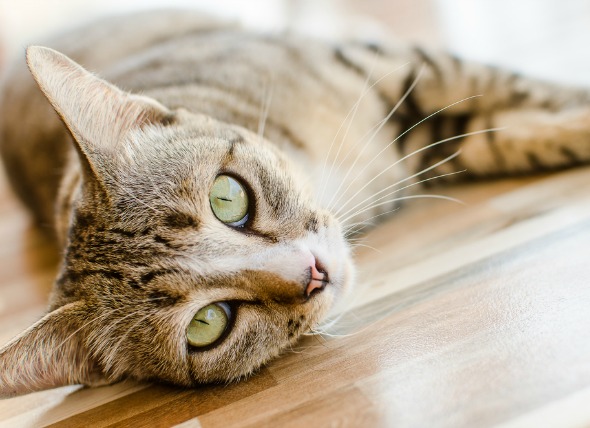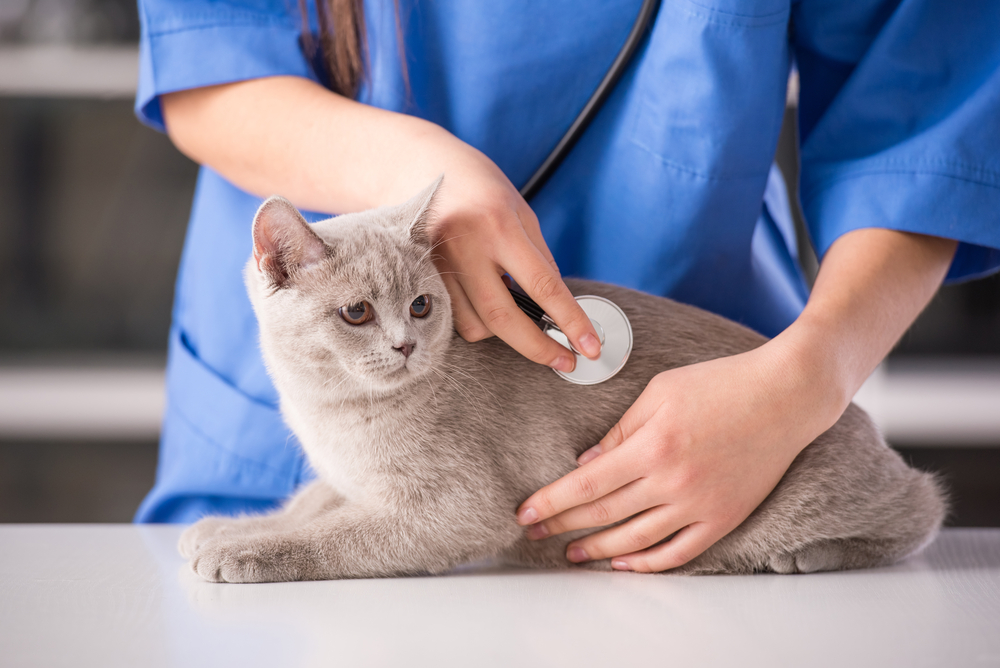

Melena, the term used to describe a black, tarry appearing feces, is typically seen due to bleeding in the upper portion of the gastrointestinal tract. It is also been seen in cats after they have ingested a sufficient amount of blood from the oral cavity or respiratory tract.
Melena is not a disease in itself but a symptom of some other underlying disease. The dark color of the blood is due to the oxidation of iron in the hemoglobin (the oxygen carrying pigment of red blood cells) as it passes through the small intestine and colon.
Melena tends to be less common in cats than dogs.
The symptoms relate to underlying cause and location of bleeding.
You will need to give a thorough history of your cat's health, onset of symptoms, and possible incidents that might have led to this condition. The history you provide may give your veterinarian clues as to where the blood is originating from. After taking a complete history, your pet’s veterinarian will conduct a complete physical examination. Standard laboratory tests include a complete blood count (CBC), biochemistry profile, and urinalysis. The results of these tests will depend upon the underlying cause of the problem.
Blood testing may reveal anemia with smaller (microcytic) and paler than normal (hypochromic) red blood cells. In cases with chronic blood loss the anemia is usually nonregenerative, meaning the bone marrow does not respond in a normal way to the body's increased demand for red blood cells. In acute cases the anemia is mostly regenerative, as the bone marrow responds normally to the body's increased demands by supplying new red blood cells.
Other abnormalities may include a decreased number of platelets (the cells responsible for blood clotting), an increased number of a type of white blood cells called neutrophils (neutrophilia), and a decrease in the number of both red blood cells and white blood cells. A biochemistry profile may reveal changes related to a diseased state other than intestinal causes of melena, including those of the kidney and liver. The urinalysis may reveal blood in the urine, which is commonly seen in patients with blood clotting defects.
Abdominal x-rays will be taken to look for any masses, foreign bodies that may have been swallowed, and abnormalities in the size and shape of the kidneys and/or liver. Thoracic (chest) x-rays will help in identifying lesions of the lungs and esophagus, also a relatively common underlying cause for melena.
Ultrasounds are also used for internal imaging, and will often return more detailed images of the abdominal cavity and gastrointestinal tract. Ultrasound may reveal masses, liver disease, inflammation of the pancreas, or kidney disease. Another diagnostic tool that your veterinarian is likely to use is an endoscope, a flexible tube that is threaded down into the stomach through the esophagus for direct visualization of masses and/or ulcers in the esophagus, stomach, and/or intestines. Endoscopy also helps in taking biopsy samples for tissue analysis and removing the foreign body, if there is one present.
The major goal of therapy is to treat the underlying disease, including diseases of the kidney, liver, and lungs. Successful treatment should ultimately resolve the problem of melena. Fluid therapy will be given to replace deficit fluids in the body, and in some patients with severe blood loss and anemia, a whole blood transfusion may be required. Patients experiencing continuous vomiting will need medication both to control the vomiting and to allow them to be able to hold their food long enough for it to digest. In cases of severe ulcers or tumor(s) in the gastrointestinal tract, surgery may be required.
The duration and type of treatment given to your cat will depend on the underlying cause of the melena. Initially, daily blood testing may be required to evaluate your cat for ongoing anemia, which may turn into weekly testing once your cat's health has stabilized. In cases with regular vomiting episodes, hydration will need to be maintained to correct fluid deficits. Watch your cat for the presence of any blood or color changes in its stool during treatment and inform your veterinarian if anything appears unusual, including behavioral changes.
Most patients will recover once the underlying disease is treated. As melena is just a symptom, the overall prognosis will depend on the diagnosis and treatment of the underlying disease or condition.
 Low Platelet Count in Cats
Thrombocytopenia in Cats
An abnormally low produc
Low Platelet Count in Cats
Thrombocytopenia in Cats
An abnormally low produc
 Cat Care Tips - Learn How To Feed Medicines
Pet of all breeds and species need medication to stay fit an
Cat Care Tips - Learn How To Feed Medicines
Pet of all breeds and species need medication to stay fit an
 Extreme Fear and Anxiety in Cats
Fears, Phobias, and Anxieties in Cats
A phobia is
Extreme Fear and Anxiety in Cats
Fears, Phobias, and Anxieties in Cats
A phobia is
 Anemia, Nonregenerative in Cats
Nonregenerative Anemia in Cats
A decrease in red
Anemia, Nonregenerative in Cats
Nonregenerative Anemia in Cats
A decrease in red
 Kidney Failure and Excess Urea in the Urine in Cats
Renal Failure and Acute Uremia in Cats
The sudden
Kidney Failure and Excess Urea in the Urine in Cats
Renal Failure and Acute Uremia in Cats
The sudden
Copyright © 2005-2016 Pet Information All Rights Reserved
Contact us: www162date@outlook.com